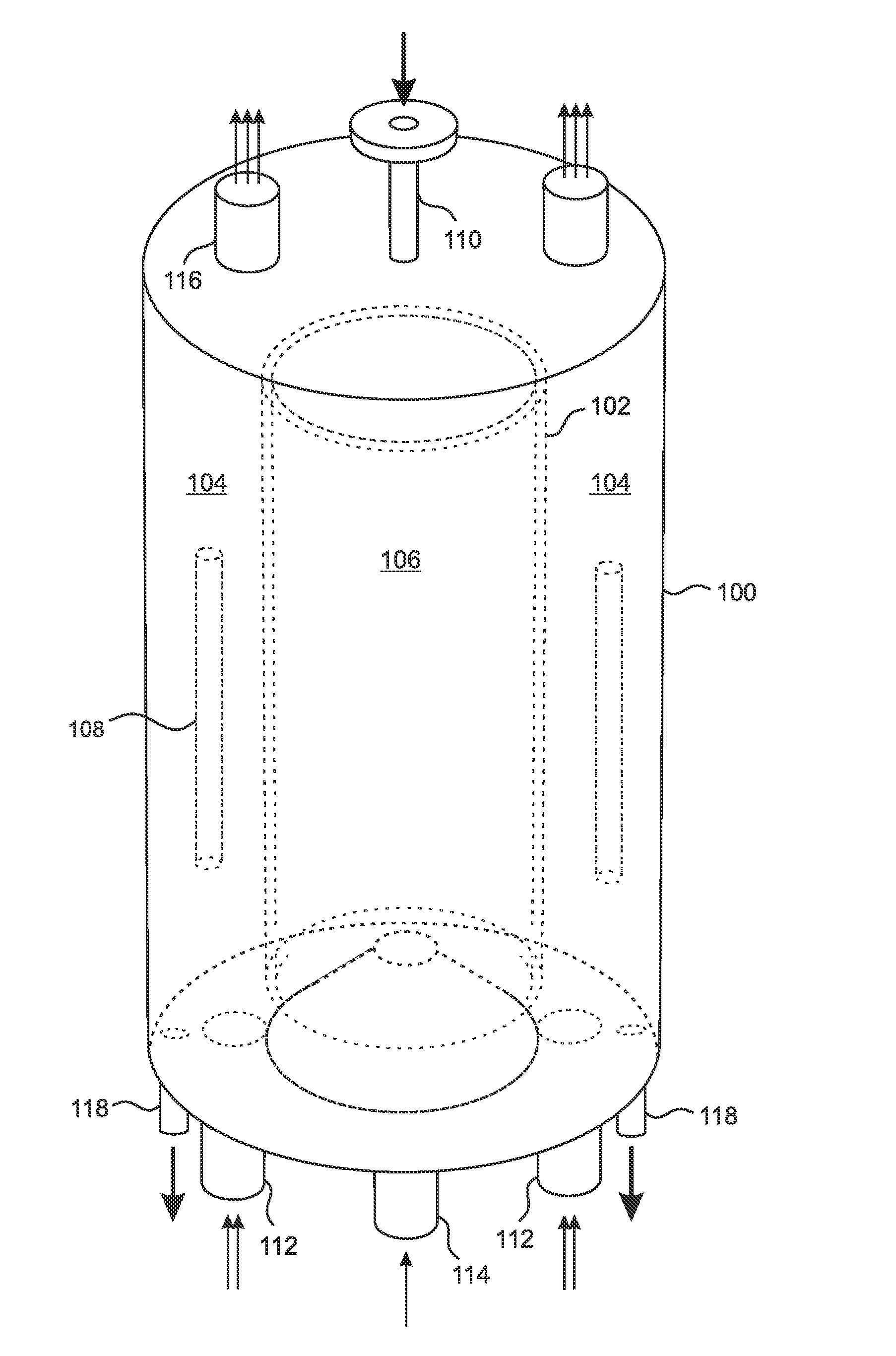Reverse circulation fluidized bed reactor for granular polysilicon production
a technology of fluidized bed reactor and polysilicon, which is applied in the direction of silicon compounds, coatings, chemistry apparatuses and processes, etc., can solve the problems of affecting process and product quality, dust formation, and the reaction gas molecules can spontaneously decompose, so as to minimize the production of silicon dust, reduce the hydrogen content, and minimize the effect of silicon deposition
- Summary
- Abstract
- Description
- Claims
- Application Information
AI Technical Summary
Benefits of technology
Problems solved by technology
Method used
Image
Examples
Embodiment Construction
[0043]The present invention is a reverse internally circulating fluidized bed reactor (FBR) that minimizes production of silicon dust, minimizes deposition of silicon on the walls and zone dividers, and produces silicon product with reduced hydrogen content, so that a separate dehydrogenation step is not needed after the silicon product is removed from the reactor. The reactor provides a pre-reaction heating gas flow that is able to lift particles of polysilicon upward through the pre-reaction heating zone, so that they enter the reaction zone and first encounter the reaction gas at the top of the reaction zone. The flow of reaction gas is relatively weaker, so that the particles slowly settle through the reaction zone and re-enter the bottom of the pre-reaction heating zone. As a result, the circulation of the silicon particles through the present invention is reversed as compared to conventional internally circulating FBR's.
[0044]A cylindrical embodiment of the present invention i...
PUM
| Property | Measurement | Unit |
|---|---|---|
| temperature | aaaaa | aaaaa |
| velocity | aaaaa | aaaaa |
| velocities | aaaaa | aaaaa |
Abstract
Description
Claims
Application Information
 Login to View More
Login to View More - R&D
- Intellectual Property
- Life Sciences
- Materials
- Tech Scout
- Unparalleled Data Quality
- Higher Quality Content
- 60% Fewer Hallucinations
Browse by: Latest US Patents, China's latest patents, Technical Efficacy Thesaurus, Application Domain, Technology Topic, Popular Technical Reports.
© 2025 PatSnap. All rights reserved.Legal|Privacy policy|Modern Slavery Act Transparency Statement|Sitemap|About US| Contact US: help@patsnap.com



